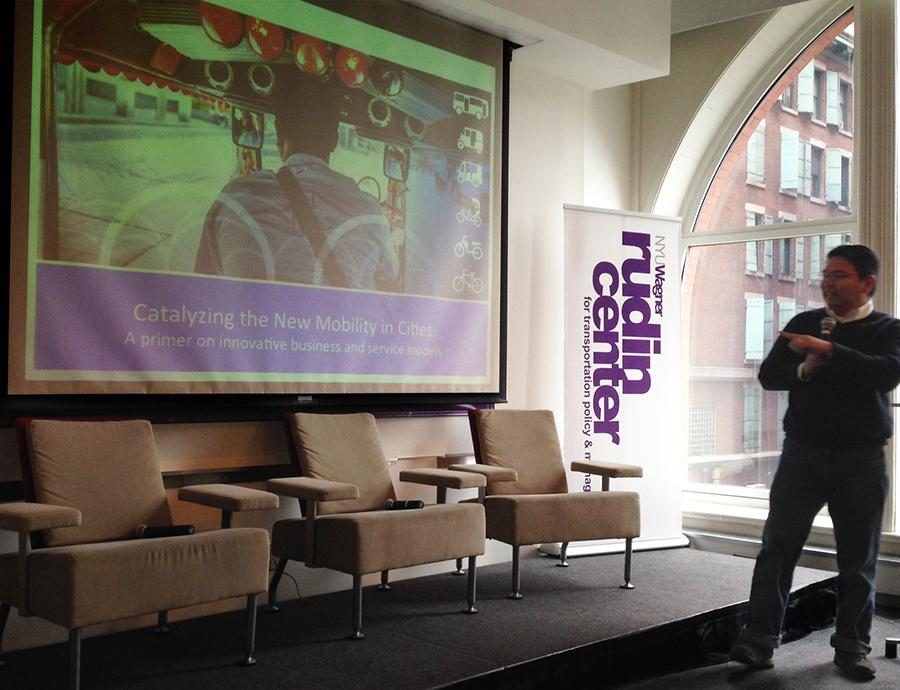Future of transportation discussed
Benjamin de la Pena, director of community and national strategy of the Knight Foundation talks about the future of cities and transportation.
December 4, 2014
During an event at NYU’s Rudin Center for Transportation Policy and Management on Dec. 3, transportation experts and entrepreneurs discussed the future of urban transportation and the shift toward ride-shares and new technologies.
The event, “Re-Programming Mobility: What Do Smart Phones and Self-Driving Cars Mean for Future Cities,” began with a lecture from Anthony Townsend, senior research scientist of the Rudin Center, regarding new technologies and services and their impact on mobility. Townsend said the public needs to re-evaluate the way they approach cities and transportation.
“There is an institutional crisis in terms of dealing with change,” Townsend said. “We need to rethink mobility.”
The next speaker, Greg Lindsay, a visiting scholar at the Rudin Center, discussed future scenarios for mobility. In his research, he has discovered that many cities were already innovating their transportation infrastructures, through the use of new technology including autonomous pods.
Lindsay also discussed SHIFT, a startup out of Las Vegas founded by Tony Hsieh, CEO of Zappos, as a part of the Downtown Project in which Zappos offered its own mobility service to people commuting into the city for work.
“They mixed ride-sharing with bike-sharing and others to create a seamless mesh,” Lindsay said. “It was a membership system for a self-selecting group. Like how you would choose a data plan and a cellphone plan, you could choose a mobility plan. One of the trends we’re going to see is popups of mobile services — private supplements of public service.”
Robin Chase, founder and CEO of Buzzcar, said modes of transportation such as private cars are becoming outdated.
“A lot of people are living in an old-fashioned present,” Chase said. “The future of mobility is going to be urban and multimodal. Any vehicles can get a better return on investment by being shared. When we introduce autonomous cars it’s going to be game changing.”
Stacey Hodge, director of the Office of Freight Mobility for the New York City Department of Transportation, addressed the problems with daytime delivery of goods, explaining how off-hour shipping could save money, time and resources.
“As we start envisioning how we’re going to be making our city more mobile, we need to start talking about how we want receivers to manage their deliveries,” Hodge said. “We’re going to have to change the status quo on how deliveries are done in our city.”
The last speaker, Benjamin de la Peña, director of community and national strategy of the Knight Foundation, argued that phasing out older modes of transportation such as pedicabs and auto rickshaws, must be done carefully, especially in dense Asian cities where 80 percent of the population may rely on these methods.
“Why abolish them?” de la Peña asked. “I see these as the original vehicle sharing.”
Wagner junior Jorge Hernandez said he appreciated that the panel brought together people from different backgrounds, who each had a different approach to the future of transportation.
“I think it was really important to have multiple stakeholders here, especially people that are working with open-data and within the DOT,” Hernandez said. “It struck me how they acknowledged how it was important to merge the fields, not just to think of it as a transportation problem, or a taxi problem, but to think of it as a holistic problem.”
A version of this article appeared in the Thursday, Dec. 4 print edition. Email Christine Wang at [email protected].

























































































































































